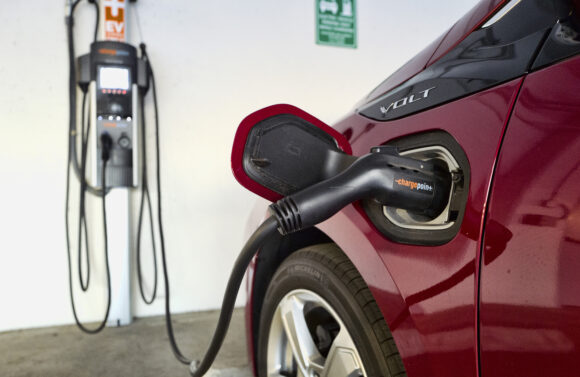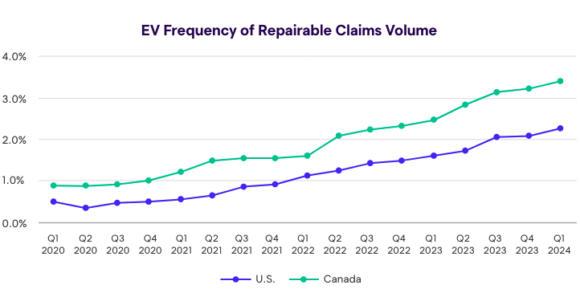A new report shows a jump in total loss frequency for both electric and newer internal combustion engine automobiles.
Mitchell this week released its Q1 2024 trends report: Plugged-In: EV Collision Insights.
The report shows EV total loss frequency has risen since late last year as the prices of used EVs have fallen. In the U.S. and Canada, EV total loss rates were 9.93% and 7.48%—an increase of 8% from Q4 2023 and 30% from Q3 2023 in both regions.
Despite the rise, EV total loss frequency remains in line with 2021 and newer ICE alternatives, which ended the quarter with a rate of 9.51% in the U.S. and 7.44% in Canada, the report shows.
The report notes that slowing new sales, price reductions and changing consumer sentiment are impacting the value of used EVs.
Other auto claim differences between EVs and ICE autos detailed in the report included:
- The average number of mechanical labor hours present on estimates for repairable vehicles was nearly twice as high for EVs as it was for ICE automobiles (3.04 versus 1.66 hours), adding to repair costs.
- Average claims severity fell in Q1 but severity costs for EVs continues to outpace ICE vehicles. In the U.S., the severity difference between the two powertrains was $6,066 versus $4,703 and in Canada it was $6,810 versus $5,110 CAD.
- Claims frequency is growing steadily, rising to 2.26% in the U.S. and 3.41% in Canada.
- EV collision repairs are more likely to include OEM parts than those completed on ICE alternatives (89.29% versus 65.14%). EV parts tend to be lighter weight to offset a much heavier battery, making them more difficult to repair. In Q1, the percentage of EV parts repaired versus replaced was nearly 13%. For ICE automobiles, it was closer to 15%.
Was this article valuable?
Here are more articles you may enjoy.



 Coinbase Says Bribed Workers Leaked Data to Hacker Seeking $20 Million in Ransom
Coinbase Says Bribed Workers Leaked Data to Hacker Seeking $20 Million in Ransom  At RIMS, Sedgwick Experts Outline Key Workers’ Comp Claims Trends
At RIMS, Sedgwick Experts Outline Key Workers’ Comp Claims Trends  Marks & Spencer Says Hackers Have Stolen Some Customer Data
Marks & Spencer Says Hackers Have Stolen Some Customer Data  X Advertisers From Nestle to Shell Deny Musk’s Boycott Claims in Suit
X Advertisers From Nestle to Shell Deny Musk’s Boycott Claims in Suit 